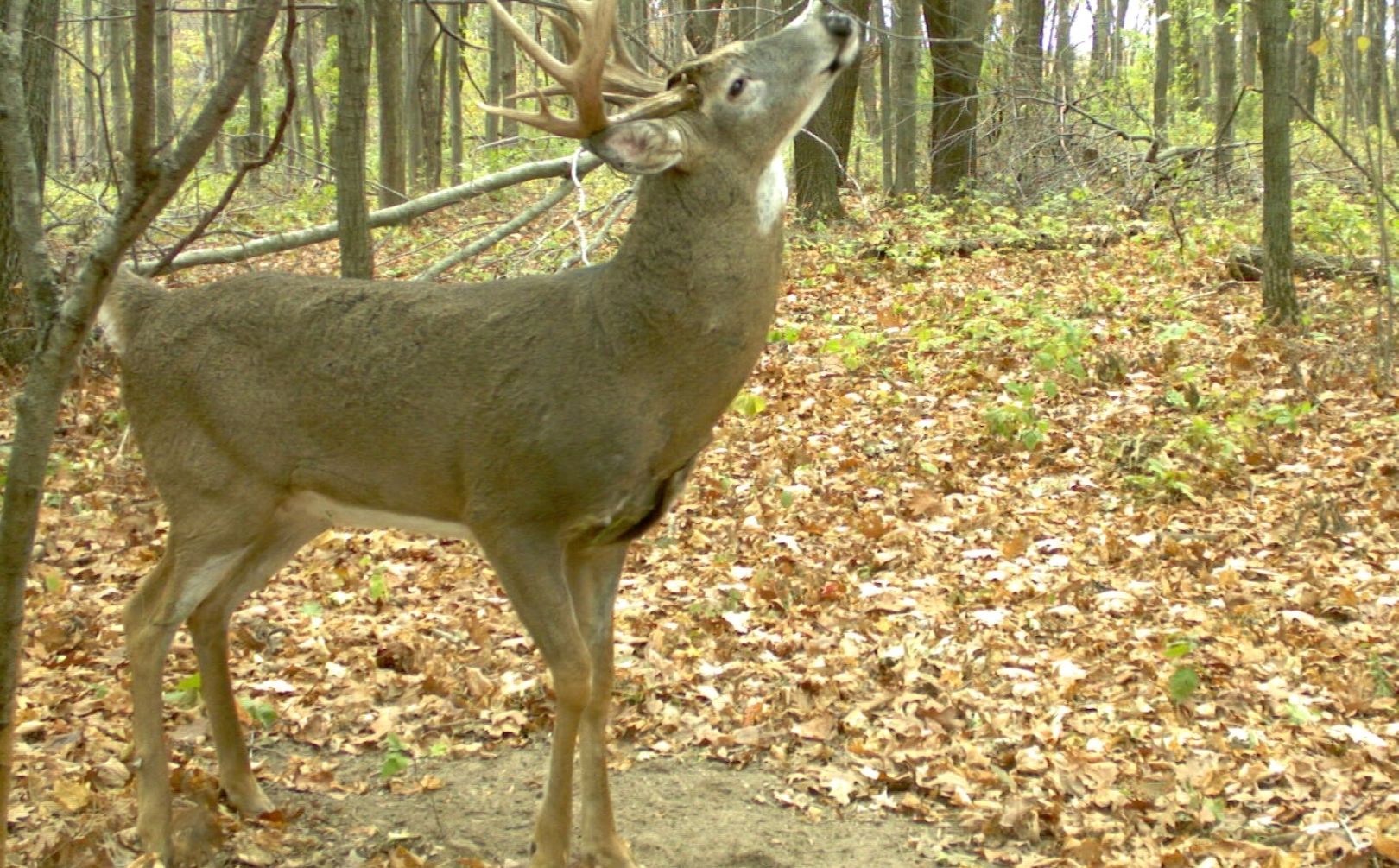Bucks usually check scrapes during the nighttime hours. When it comes to the behavior of white-tailed bucks, checking scrapes is an important method of communication.
These scrapes are made by bucks using their hooves to remove leaves and soil and urinating on the exposed ground to create a scent. Other bucks can then use these marks to identify the presence of the first buck and his readiness to mate, which makes it more likely for fights to break out over dominance between competing bucks.
Bucks typically check scrapes during nighttime hours when they are most active, so hunters and wildlife enthusiasts hoping to observe this behavior need to be patient and prepared for low-light conditions.
Understanding the habits and behavior of these elusive creatures can provide valuable insights into their environment and the broader ecosystem of the region.
Contents
The Significance Of Scrapes For Bucks

Credit: www.whitetailhabitatsolutions.com
Scrapes play a crucial role in the deer world, especially for bucks. These markings serve as a way for bucks to communicate with each other, mark their territory and attract does for mating. Bucks create scrapes by pawing at the ground, licking or rubbing their antlers on trees, and urinating on overhead branches.
Understanding this behavior is essential for hunting strategies as scrapes can indicate a buck’s presence in the area. It’s important to note that bucks tend to check their scrapes mostly during the night time, but it’s not uncommon for them to visit during the daytime as well.
Knowing the significance of scrapes can help hunters and outdoor enthusiasts successfully track and observe deer behavior.
Buck Behavior During The Rut
During the rut, bucks tend to modify their movement and behavior patterns. There is a correlation between scrapes and the rut, as bucks are more interested in marking their territory. As a result, they tend to check scrapes more often.
This is a form of communication between bucks, indicating that they are ready to mate. Bucks may also check scrapes to determine the size and strength of their competitors. It is not unusual for bucks to check scrapes during the night, as they are more active during this time.
Understanding buck behavior during the rut can help hunters increase their chances of success. By knowing when and where bucks may be checking scrapes, hunters can position themselves in the best locations to spot and hunt bucks.
The Effect Of Weather On Buck Scraping Activity
Bucks tend to check scrapes during the early morning hours and late afternoon. However, the weather condition plays a significant role in their scraping activity. When the temperature falls, bucks scrape more frequently. High humidity weakens scents, making scrapes less appealing.
Windy weather often disrupts the scent trails and impacts the communication between deer. Scrape checking increases during and after rainfall and snowfall as the falling precipitation activates the scent in scrapes. Weather plays a crucial role in buck scraping activity, and hunters should use this knowledge to their advantage when planning their hunts.
The Best Time Of Day To Hunt Scrapes
Bucks are most active during dawn and dusk. Their peak movement coincides with lower light levels and cooler temperatures. During midday, scraping activity declines as bucks take cover. Many factors can affect scraping behavior, including weather conditions and the presence of other deer.
Bucks often check scrapes when moving between feeding and bedding areas. Late october through early november is the ideal time to hunt scrapes, as bucks are more active during the rut. To maximize your chances of success, consider the timing and location of scrapes when planning your next hunt.
Understanding the peak movement times for bucks can help you make the most of your hunting trips.
Preparing For A Successful Scrape Hunt
Utilizing trail cameras to monitor scraping activity can be a game changer when preparing for a successful scrape hunt. Identifying fresh scrapes and understanding their relevance to hunting strategies is key. It’s also important to plan for scent control and carefully consider your approach when hunting scrapes.
By taking these tips into consideration and strategically utilizing trail cameras, you can greatly increase your chances of a successful hunt. Remember to always monitor and analyze trail camera data to make informed hunting decisions. Happy hunting!
Conclusion
As a hunter, understanding when bucks check scrapes is crucial to increasing your chances of success. Based on our research, bucks tend to check scrapes primarily during the night and early morning hours, with a possible decline in activity during mid-morning and early afternoon.
However, it’s important to note that each deer and hunting location is unique, so personal observation and experimentation is key. Additionally, factors such as weather conditions and hunting pressure can greatly affect deer behavior. By using trail cameras and regularly checking scrapes, you can gather valuable information about when bucks are most active in your area.
Ultimately, patience and perseverance are key qualities in hunting, and staying informed about deer behavior can increase your chances of a successful hunt. Always remember to follow ethical hunting practices and regulations to ensure the safety and conservation of our wildlife resources.

